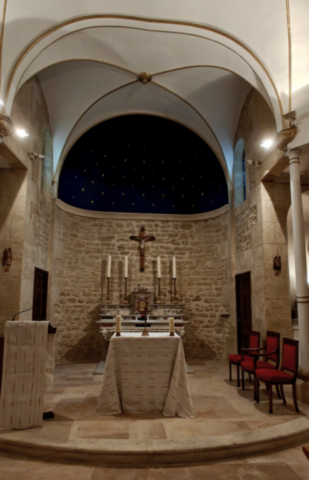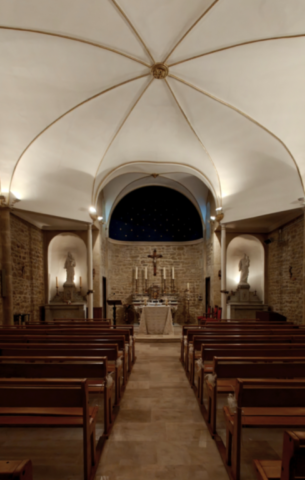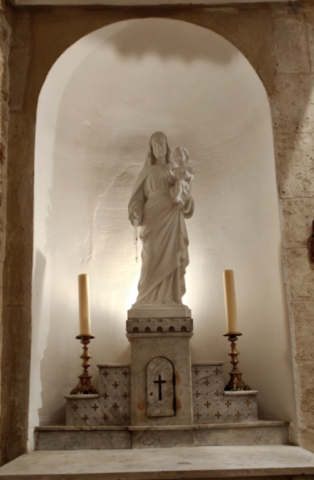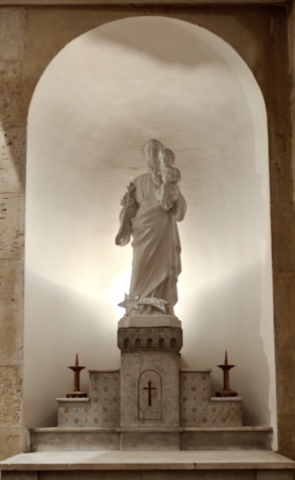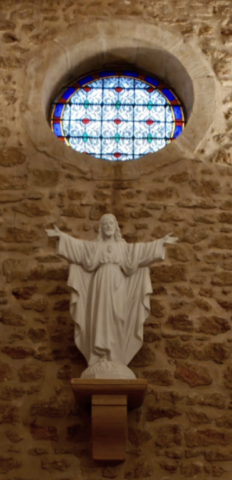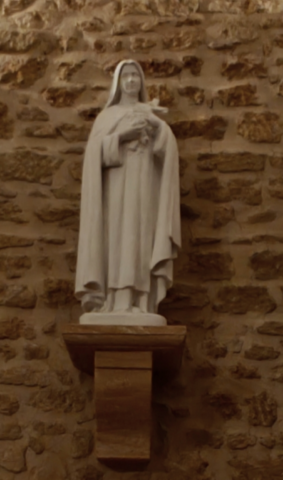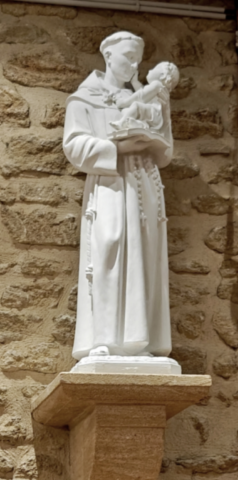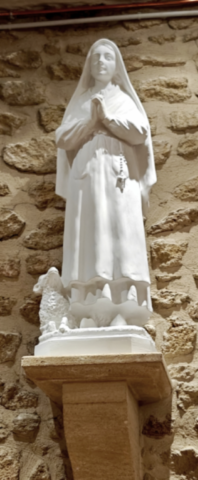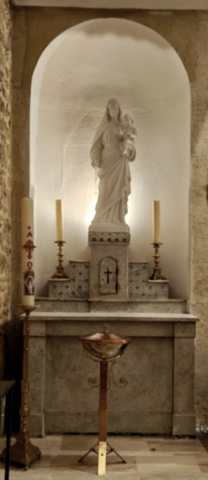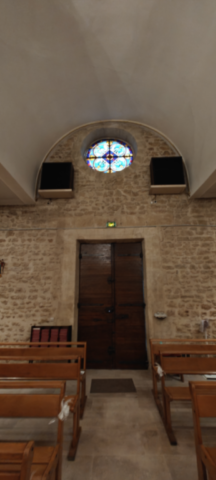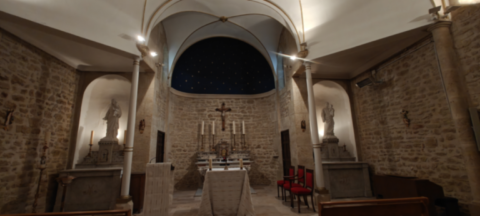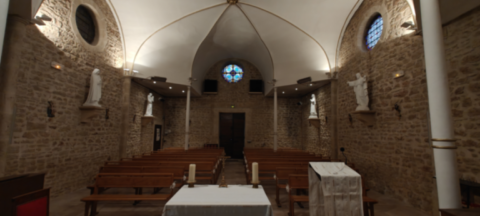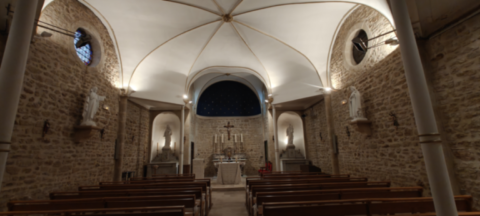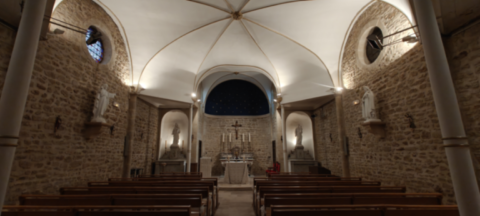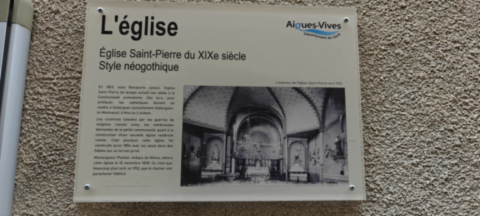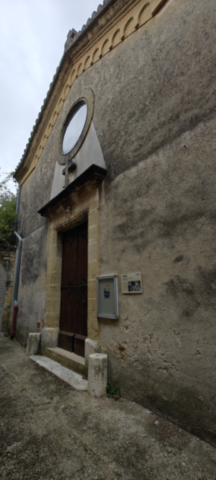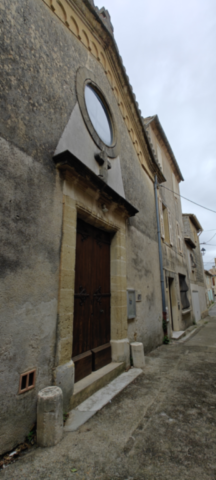Aigues-Vives
A modest building, in light stone, reflecting a certain rural classicism
A new neo-Gothic breath since 1855
The old Saint-Pierre church, built in 1686-87 to the west of the village, was ceded to the Protestants during the Revolution, in accordance with the Concordat and the strong local Protestant presence.
The Catholics, deprived of a place of worship, appealed to local generosity and the support of the bishopric of Nîmes to rebuild their church. The new Saint-Pierre church, in neo-Gothic style , was erected in 1855 in the Cantonnat district.
Location & parish framework
It is located at 47, rue du Cantonnat , and serves as a Catholic parish church.
It depends on the parish group of Aigues-Mortes / Grau-du-Roi , with Vauvert, Vergèze, Aubais and other villages, under the leadership of the diocese of Nîmes – Uzès – Alès
